This post may contain affiliate links. Please read our disclosure statement for more information.
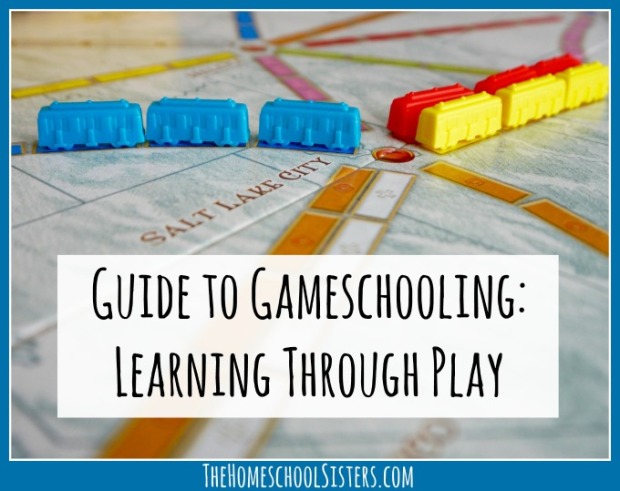
Written by Caitlin Fitzpatrick Curley of My Little Poppies
In our most recent episode, Gameschooling: Learning Through Play, Kara and I talked about how to add more games to your homeschool day for both learning and fun. We shared our family’s favorite games and discussed challenges to gaming, such as cruddy instructions, sore losers, and cost.
Since the episode aired, we’ve received a number of questions about the specifics of gameschooling, and also about how to get started if you have never had a family game night before but want to start the tradition.
Gameschooling allows for stealth learning at its best. Games don’t judge, they don’t leave red marks, they don’t dole out grades. Instead, games allow for practice of skills. Mistakes are expected. If you lose, you get to clear the board and try again.
Today, I’m going to share tips and tricks, from building your game closet to deciphering instructions, to organizing your collection, to finding the time to play. My hope is that these strategies will help you to have more fun in your homeschool day!
Choosing the right games for your family
Before you can have a successful game night, you have to select the perfect game for your family. Every family is unique and you know your tribe best. Here are some things to consider when choosing a game:
- Number of players – We are a family of five and many games are created for a maximum of four players. Make sure you have a game that will match your family size.
- Age recommendations – This is essential when playing with younger kids. Make sure the game you pick is something that can be enjoyed by all members of the family.
- Time required – Nowadays, this is usually stated on the box. If your children are young, or if you have limited time for playing, be sure to check the time required.
- Ease of use – In my opinion, the very best family games are those that can be explained in under ten minutes but played again and again and again. Here are some of family’s favorite games that meet this criteria:
- Fun factor- All games are not created equal and some are more fun than others. If you are new to family game night and/or gameschooling, focus on fun first.
- Challenge – This is especially important with gameschooling. I am a firm believer that all games are educational, but some offer more challenge than others. If you are relying heavily on games in your homeschool, you’ll want to have some challenging games in your closet!
- Longevity – Games are not cheap. If you are making an investment, try to find games that will grow with your family.
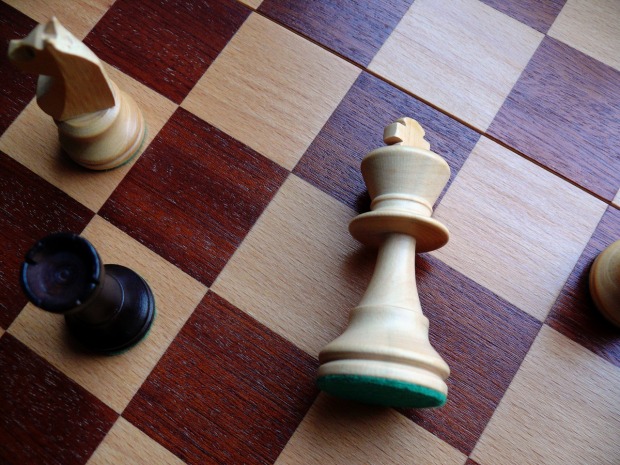
How to build your game closet without going broke
Games are wonderful, but building your family’s game closet can be a costly venture. I am, admittedly, a bit of a game addict… but I’ve been building our closet for over a decade and I rarely buy games at full price. Here are some tips and tricks for building your game closet without breaking the bank.
Three tips for building your game closet:
- Do your research- Listen to our Gameschooling episode and check out the show notes for links to each game mentioned. Jot down the games that might work for your family and research each game online. Create a wishlist of games that will work for your family.
- Start small and focus on what they can play now– Yes, Prime Climb is amazing, but if your kids are 2- and 4-years-old, you might want to start with Candyland or Zingo. Put Prime Climb on your wishlist. Baby steps!
- Buy second-hand games – Do you know how many people buy games without doing their research? Do you know how many people receive games as gifts and never find the time to play? I buy many of our games second-hand. If you know what you are looking for, you’ll save money.
- Start a game-giving tradition – Games make fantastic gifts. Why not start a family tradition and give a game on each birthday or major holiday? You’ll build your game closet in no time at all! Here’s another idea: Buy a game while you are on vacation. It would be a great memento from your trip- so much better than a t-shirt!
How to find inexpensive games:
Do you want to know what I do when buying second-hand? I’ll give you an example…
Let’s say I find myself at a yard sale and I find Ticket to Ride for five bucks. Great deal, right? Sure! But, what if pieces are missing? Simply Google “Ticket to Ride contents” and you’ll find oodles of sites that list what should be in the box. And then check before buying. And, if there is a piece missing, is it something you can do without? Our family has the game Trouble… my childhood Trouble. And if you are playing my childhood Trouble and choose to be blue, you will play with three blue pegs… and a marble. That fourth blue peg has been missing for over thirty years and the marble works just fine. In fact, my kids fight over who gets to “be the one with the marble” … I kid you not.
Yes, Googling and counting at the yard sale table might sound a bit tedious but it’s worth it if you get Ticket to Ride for five dollars versus thirty-five!
Here are some places to look for used games:
- Yard sales
- Second-hand stores
- eBay
Also, don’t be afraid to ask friends and family. Many people have unused games sitting around collecting dust!
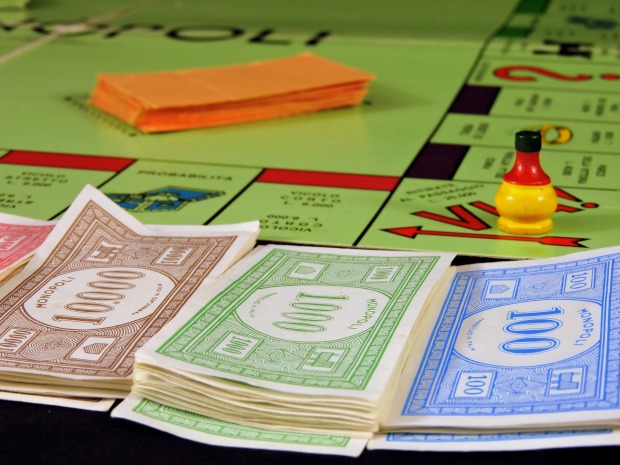
Organizing the game closet
I realize this is perhaps the most challenging aspect of gameschooling. Where do you store it all? How do you keep it organized? How do you rotate through the games?
I get asked a lot of questions about game closet organization, but they are challenging questions to answer. Game organization depends on your space, your games, and your unique family.
This is when I come clean and admit to you that while I am laid back in many areas, I am a bit of a game nazi. I don’t care if you make a mess of the puppets, leave an army of tiny animals in the upstairs hallway, or build a magnatile tower to the ceiling and leave it out for three days. But… games are different.
We play games daily over here and when we sit down to play, call me crazy but I want the instructions and pieces to be in the box. Nothing drives me crazier than finding games shoved in the closet every which way, or to find a rogue pawn under the couch.
Set some game ground rules- It has taken me a long time to build my game closet. In fact, my closet houses many games from my childhood. If you want free reign of my game closet, you need to follow some ground rules:
- You can only play one game at a time and therefore you should only take out one game at a time.
- If you can’t reach a game, come get me and I will help you.
- Do not sit in or stand on game boxes.
- When you finish playing, do a double-check to make sure you got everything.
- Make sure the box is actually closed before putting it away.
- Don’t put boxes in the closet sideways.
My children are currently 8, 6, and 5-years-old and, while it has taken some time to get here, they are usually fantastic about playing and cleaning up games.
Create a game “menu” (know what you have) – I have a unique situation because I am a blogger who writes about games regularly. Therefore, I have many lists on my site, organized by subject, detailing the games that we have. If I didn’t have a gameschooling blog, here is what I would do:
- Make a list of all the games you own in the following categories (bonus points for grouping them like this- but that is hard):
- Travel games
- One-player games
- Cooperative games
- Games you can play in under 30 minutes
- Games that take more than 30 minutes
- If you are a gameschooler, I would recommend listing games by academic subject/skill. (If you are a fan of stealth learning and do not want your child to know that Yahtzee totally counts as math, make this list and keep it hidden!)
- Photocopy your list and keep one copy with your homeschool planning paraphernalia.
- Laminate the other copy (for durability) and keep it IN your game closet. Tape it to the inside of the door so it is easy to find. That way, when someone wants to play something, they have a “menu” to choose from!
Ditch what you have outgrown- I know it can be hard to part with a game that holds so many memories, but you will thank yourself later!
Ditch what you no longer play- If you don’t play it, purge it. You’ll have more space for the games you love. You don’t have to love Catan just because everyone else does!

Deciphering instructions
As we mentioned in our latest episode, some fantastic games have crummy instructions. Do not let that get in your way. When I’m struggling through instructions, I’ll often give my kids an errand to buy myself some time. And then I hit the internet.
Here are some tips:
- Google is your friend – Believe me, if the instructions are crappy someone out there has created better ones.
- YouTube is also your friend- I often need to see a game being played in order to understand it fully.
- Table Top with Will Wheaton- This show is fantastic!
- Remember: Your goal is fun, not perfect- Don’t be afraid to give it a go, even if you aren’t 100% sure you are playing correctly. Try a practice round or two. Make things up as you go if you need to. The important thing is having fun and learning together.
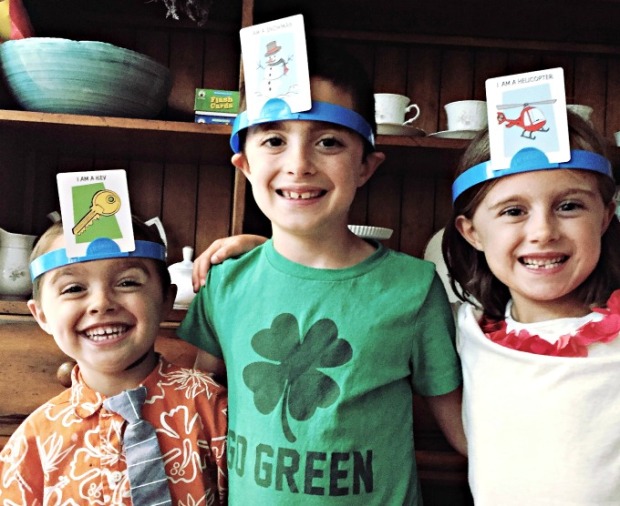
Gateway Games: games and little ones
People often ask me what I did to get my children to love games as much as they do.
I tried to look excited every time a toddler approached with Candyland or Chutes and Ladders for the ninety millionth time. I shared games and stories from my childhood. I was patient and kept my eye on the prize.
The Candyland hours you are putting in now will pay off later. Candyland is a gateway game. Here are some others:
- Anything by Peaceable Kingdom
- Chutes and Ladders
- Cranium Hullabaloo
- Curious George Matching Game
- Curious George Discovery Beach
- Fairytale Spinner Game
- Hedbanz
- Hi Ho Cherry-O
- Obstacles
- The Sneaky Snacky Squirrel Game
- Tell Me a Story Cards
- Yoga Memory
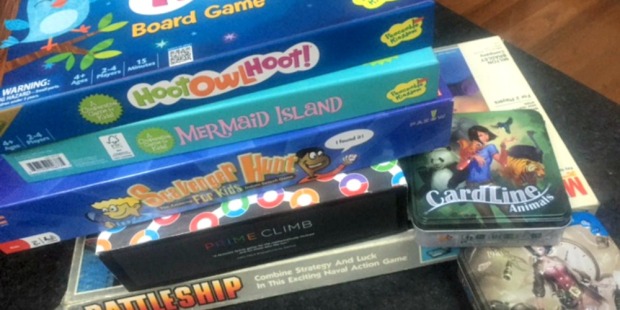
Finding time to actually play
We are a family of gameschoolers and we play games most days, but that is our family. I love the expression “you do you”.
You know your family best. What will work? Once a week? Once a month? Holidays? Do what works for you.
Here are some other tips for successful family gaming:
- Give yourself permission to play – Later this week, I’ll have a post up on Simple Homeschool about this topic. Gameschooling does not look anything like the school of your past, but that does not mean it is any less educational. We all know that play is important, so separate school and education in your mind and give yourself permission to play! Games provide an opportunity for stealth learning. Are you dealing with power struggles over language arts? Why not bust out the Mad Libs and You’ve Been Sentenced and have some fun.
- Keep games accessible and know what you have- Is your child struggling this week and crying over his math book? If you know what you have, you can ditch the books and play a fantastic math game. It counts, I promise.
- Schedule your play- It takes time to get into a routine or habit. If you want to be a family of gamers, pick a date and a time that generally works for everyone and schedule it. It might be Saturday night or Friday mornings over lunch… do what works!
- Know your go-to games- In our latest episode, Kara talked about go-to games and I love this concept. If your child wants to set up Monopoly but you need to get dinner on the table, suggest an alternative go-to game that everyone loves.
- Keep a game out- On Sunday afternoon, I’ll often pull out a few games I’d like to play during the week. Maybe we’ve been light on science and I want to squeeze in a gameschooling science lesson, or maybe it’s a game we haven’t played in a while. I leave the stack out in the open as a visual reminder.
- Keep games in your car and your purse- You never know when you’ll find yourself waiting… either in a waiting room or at a restaurant. Tuck Bananagrams in your purse or Sushi Go in your glove box. You’ll be glad you did!
- Set up a coffee shop date- Treat your kids to a muffin and your favorite game and have a game date!
- Set it up, play all day- Kara’s friend recommended this strategy and I just love it. If you are feeling strapped for time, set up a game on your dining room table and play when you can. Ask you walk through with a basket of laundry, make your move and tell your opponent it’s his turn… when he’s ready. No pressure!
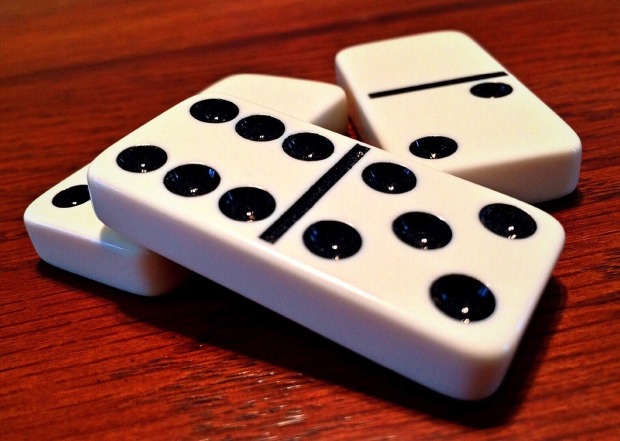
When it comes to gameschooling, Practice doesn’t make perfect… but it does make memories
Yes, I am a gameschooler. Yes, we play games most days. Yes, I love it. But…
… we aren’t perfect. I always joke that my Instagram feed is silent. You might see a photo of us playing a game, but you are missing out on the squabbles, the cheating accusations, the debates over rules, the sore losers, and the gloating winners. Last weekend, I even had a board flipper mid-game. We struggle, too.
Every time you sit down together and play a game, you are building relationships, working on life skills (like learning to lose and win with grace), practicing academic skills, and making memories. The conversations you will have during gaming are those “big juicy conversations” that Julie Bogart talks about.
As Julie said in our second -to-last episode, “Don’t forget that what you’re creating now is what they will remember and enjoy talking about then.” I believe this holds true for gameschooling.
We are not perfect. Our game playing is not perfect. Yours won’t be perfect either. But I believe that playing together as a family is important.
Don’t forget to enter our Game giveaway!
This week, we have another fantastic giveaway for the game loving families out there. In conjunction with the fine folks at ThinkFun, we are giving away THREE fabulous games (Rush Hour, Balance Beans, and Clue Master). Head over to Amazon to check out the game descriptions, and then enter the Rafflecopter giveaway here.
Now, it’s your turn. Tell us: What is your family’s favorite game right now? Share here!
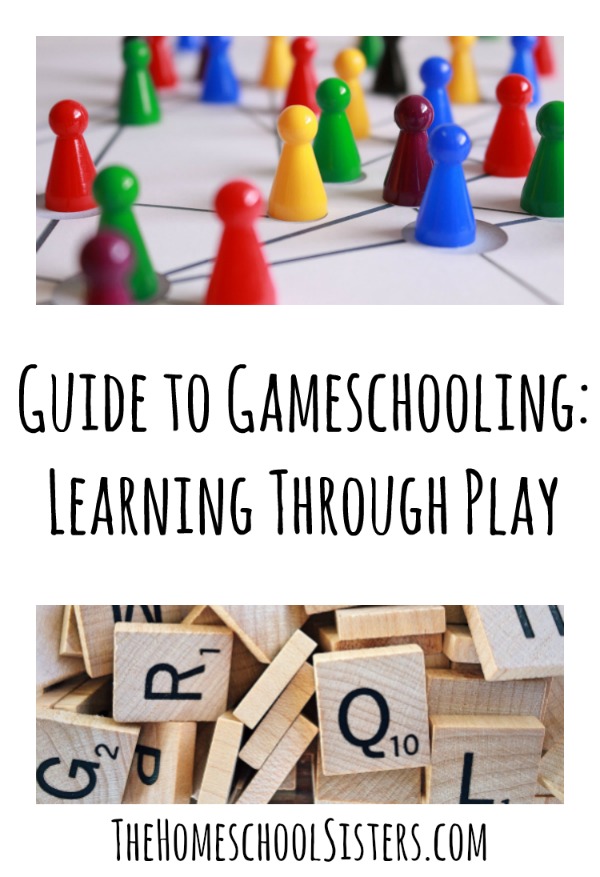
MAKE SURE YOU DON’T MISS AN EPISODE
Here are several ways that you can tune in to see what Cait and Kara are up to:
- Subscribe right here on Cait and Kara: The Homeschool Sisters blog.
- Or, find us via iTunes.
We would love if you could leave us a review on iTunes.
DO YOU HAVE A QUESTION OR TOPIC YOU’D LOVE TO HEAR CAIT AND KARA TALK ABOUT?
If so, send us a message or leave a comment. We love to hear from you!
BE SURE TO FOLLOW THE HOMESCHOOL SISTERS
You can hang out with Cait and Kara on Facebook, Twitter, Instagram, and Pinterest.

I wanted to attach a picture, but I can’t figure out how. 😦 We made the decision to convert the 1st floor master bedroom in our new house into a family room/gameroom, and we turned the master closet into a game and book closet! It may be my favorite renovation idea ever. We included this table: http://www.ikea.com/us/en/catalog/products/10290221/ and it’s awesome! We can leave a game set up in there for a couple of days (Hello, Risk, Forbidden Desert, and Puerto Rico), but then close it up out of the way for movie night.
We’ve started making sure that we include a game in our family Christmas gifts so that we have it to play over Christmas vacation! All of your lists are going to make it hard to decide this year, but right now we’re leaning towards at least Roborally. 🙂
LikeLiked by 1 person
Janelle- A game room is my DREAM. I am so glad you have one and you’re enjoying it. Fantastic!!<3
LikeLike
The card game Bohnanaza is getting a heavy duty workout these days. Previously it’s beenTicket to Ride. Other favourites are Carcassone and Dominion.Memoir 44 is a favourite with the guys. These are for the older crowd – my lot range from 15 up.
LikeLiked by 1 person
I just bought Bohnanaza!
LikeLike
Thanks for all the suggestions! I love gameschooling.
My little ones also love the three little pigs game
LikeLike
Oooh, I haven’t seen this one yet. Thank you!
LikeLike
Hi there. Just popping in to say I just discovered your podcast and I’m in love:) I’m a Brave Writer user/Julie super-fan, and I feel like you two are my people! My kids are 9 and 7, and we absolutely love games…we have two big cabinets full, and this podcast inspired me to sort through them, see what we have, and make a wish list for Christmas.
I’m sure you’ll see me around here and on your other social media spots. So happy to have found you both.
LikeLike
Welcome, Angela! We are so happy to have you!
LikeLike
We love playing games but when our kids were 5 & 7 and we couldn’t find any math games that we could all play together as a family, where we were all challenged (no one had to dumb down) and where we could all learn and improve, so we created our own and PLYT was born. We’re just ordinary parents with a love of learning through games but no experience in producing them, however when the school noticed such an improvement in our kids math we felt compelled to get PLYT made. It had helped our kids and we were sure it could help others. Being parents ourselves and knowing that families have limited playing time and money we wanted to check that it genuinely worked so that we could honestly recommend it to others. So we sent copies to independent researchers to trial with families across the UK and they proved that playing PLYT at least once a week for just 6 weeks improved math in 7-13 yr olds by 30% and in adults by 22%. Since then it’s been endorsed by the leading math charity in the UK (National Numeracy) and is recommended on their family toolkit. PLYT is now played in schools and homes across the UK & Europe and we’ve now launched in the US. I’m not sure if you’ve seen it on amazon? https://www.amazon.com/PLYT-Family-Abilities-Proven-Endorsed/dp/B00FGPUHS4/ref=sr_1_1?ie=UTF8&qid=1478779454&sr=8-1&keywords=plyt If you’d like to try it please let me know. In the meantime great blog and happy gaming!
LikeLike